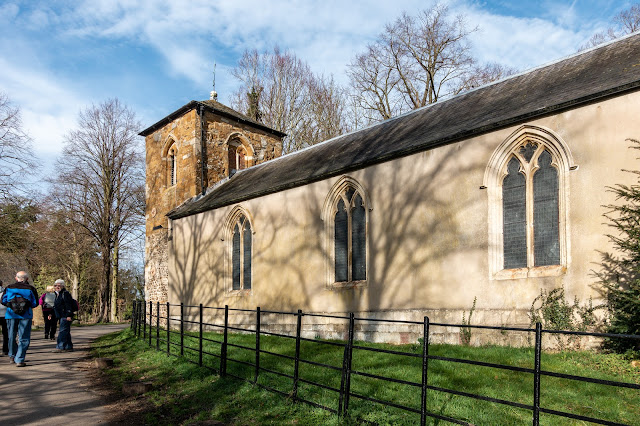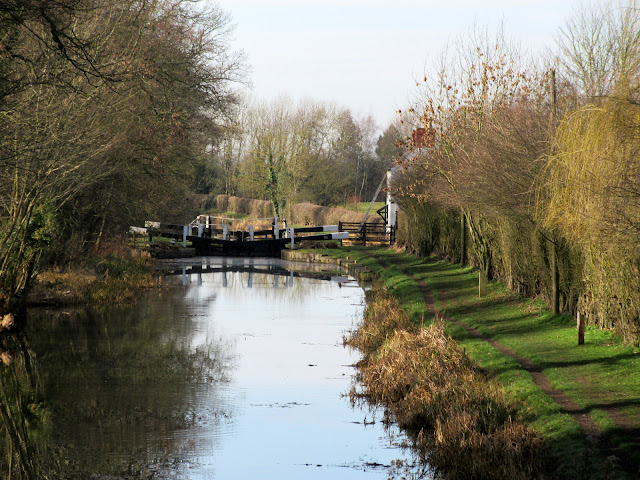It was a cracking day for walking. The sun was shining and warm, but as it was still February it was tricky deciding just what to wear.
We met at Wistow Garden Centre to start our walk along the minor road towards Newton Bridge.
Coming the other way we were greeted by some miniature dogs out for a walk.
In the grounds of the old manor house a make over was under way. Apparently only one building is going to be built on the site so we will have to keep an eye on the development.
Before Newton Bridge we called in to St Luke's church yard which is renowned for their snowdrop display. We were not disappointed.
Beautiful snowdrops.
With daffodils making an early appearance.
An old grave number.
Built in the 13th century, the church was originally a chapel and consists of a nave and west tower. The upper half of the tower is built in ironstone whilst the older, lower part is rounded stones which may have been taken from the river. The doorway dates back to the 15th century. The church is by the manor house and is divided from the village by the Grand Union Canal and the Leicester to London mainline railway line.
Leaving St Luke's we dropped down on to the Grand Union Canal Leicester Line at Bridge 80.
Newton Top Lock
According to the lady, it was the dog's birthday and they were here fishing as a birthday treat for the dog. Hmm ..... is that what's known as a fishy story?
There were still parts of the canal tow path that were a little on the muddy side.
Reflections.
No lambs to be seen yet but grazing for two or three maybe?
Silhouettes - beautiful!
On our way up on to Ivy Bridge 78.
Time for a group photo.
The site of the Medieval village of Wystowe.
"Human hairs growing through the grass in Wistow Churchyard on 1st June". This is the legend which resulted from the murder in 849 of Saint Wistan, Christian Prince of Mercia, by his cousin, Brifardus, who coveted the throne and cared nothing for Christian principles. Little now remains of the early church built on the site of that murder, but the name Wistow, shortened from Wistanstowe (holy place of Wistan) reminds us of that Christian Prince.
Time for a break at Wistow Cafe. Tea, coffee and cakes in the February sunshine - wonderful.
Too many cakes?
The return part of the walk was a mirror of the first part but in reverse.
The Belted Galloway is a traditional Scottish breed of beef cattle. It derives from the Galloway cattle of the Galloway region of south-western Scotland. It is adapted to living on the poor upland pastures and windswept moorlands of the region. The exact origin of the breed is unclear, although the white belt for which they are named – and which distinguishes the breed from the native black Galloway cattle – is often surmised to be the result of cross-breeding with the similarly-coloured Dutch Lakenvelder breed.
Belted Galloways are primarily raised for their quality marbled beef, although they are sometimes milked.
When walking on the other side of the canal, the scenery somehow looks completely different.
Last part of the walk down the lane and back to Wistow Garden Centre.
Dates for the diary: March 15th daffodil walk
April 5th anniversary meal.

























































